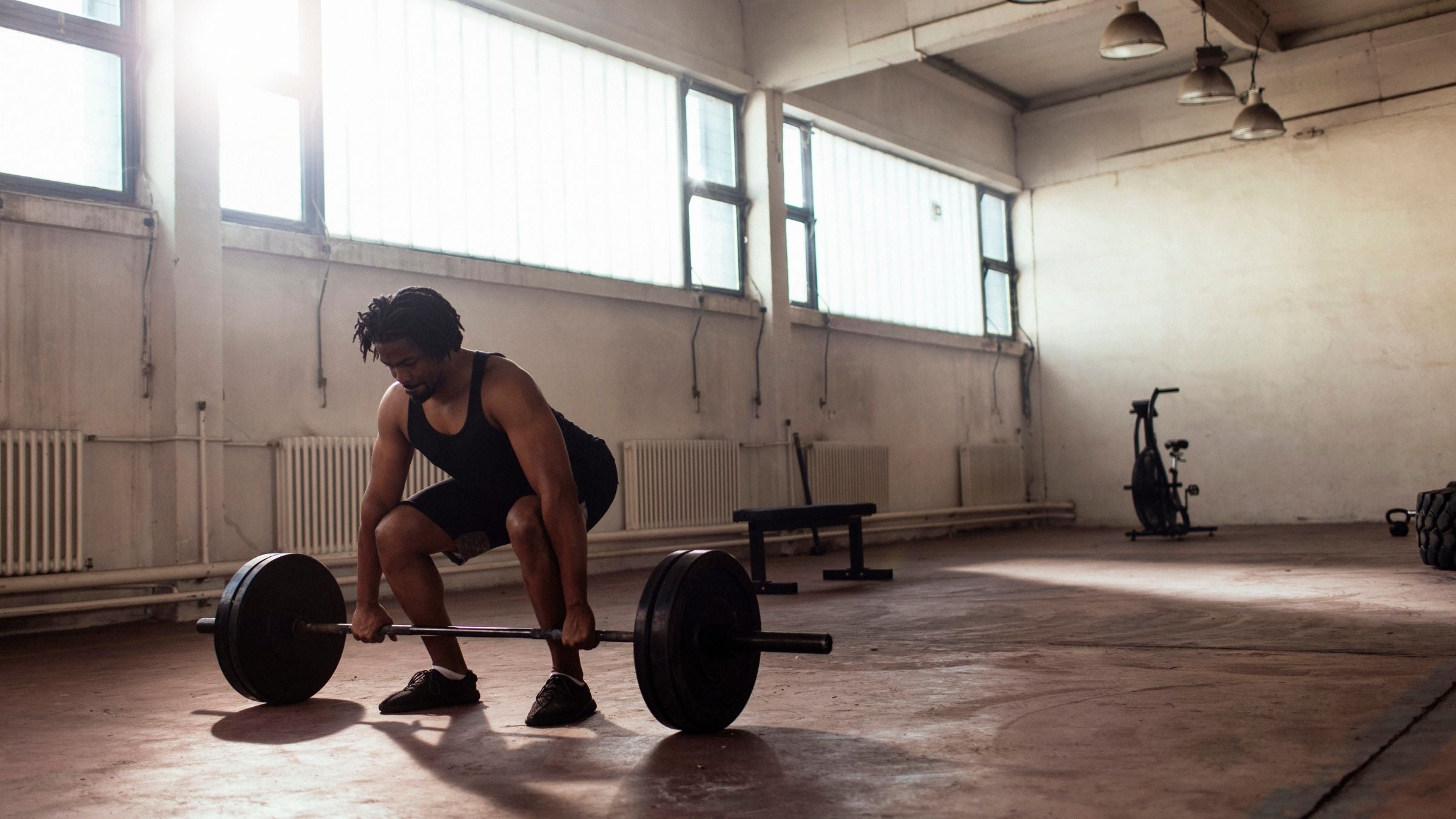5 Steps to Activate Your Glutes During Strength Training

(Photo: Getty Images)
Knowing how to activate your glutes can be key to keeping injuries at bay. With the right work in the gym, you can build a more resilient body and help correct muscle imbalances that tend to develop after months and years of swimming, biking, and running. Routines that involve functional exercises such as deadlifts and squats can strengthen the legs and hips, if performed correctly. However, many athletes are novices in the gym and do not know how to activate their glutes effectively when performing these exercises. Here are five steps to on how get the most out of your glutes during strength training:
RELATED: Strength Training for Triathletes
How to activate your glutes during strength training
1. Open up those hip flexors
Start each strength training session with an exercise such as the low band split squat. This exercise will strengthen your legs but will also provide your hip flexors with a great stretch. The hip flexor muscle group is commonly tight in triathletes, and having optimal length in these muscles will facilitate better glute muscle activation. Try this hip mobility test to determine how tight your hip flexors are.
How: Hold a handle of a band that is attached to a low anchor point with your right hand. Step back to remove the slack from the band then take a large step back with your right leg. Land on your big toe, get tall and squeeze your right butt-cheek. Keep your arm straight and without losing your butt squeeze, bring your right knee toward the ground. You should feel a burning stretch in front of your right hip and thigh. Pause just before your right knee touches the ground. Hold this pose for 5-10 seconds. Return to standing and perform 10 reps. Complete two sets per leg. Check out this video here for a demonstration.
RELATED: Why Strength Training is Important for Endurance Athletes
2. Learn how to pelvic tilt
In order to know how to activate your glutes effectively, you need to have developed the body awareness to be able to rotate your pelvis (see video here.) The pelvis can rotate forward (anteriorly) or backward (posteriorly). If you rotate your pelvis forward, your lower back will increase in curvature and if you rotate backward your low back will flatten out. To activate the glute muscles effectively, you need to rotate your pelvis backwards. This position is how you want to finish all deadlifts and squats.
RELATED: You’re Probably Squatting Wrong
3. Activate your glutes with bridges
After you have lengthened your hip flexors and have developed the body awareness to be able to rotate your pelvis, give the glute bridge a try. (See video here.) This will help you to recall how to activate your glutes properly before moving on to more advanced strength moves.
How: To perform the glute bridge, place a band around your knees and lie on your back with your feet flat on the floor. Lift your hips off the ground and form a straight line from your shoulders to your knees. Backward tilt your pelvis and squeeze your butt. Push your knees out into the band to further activate your glutes. Hold this position for 10 seconds and perform 2-3 sets of 6-8 reps each. You should not feel this exercise in your thighs, hamstrings, groin, or lower back.
RELATED: Build Your Own Custom Strength Workout
4. Try the Kneeling Band Hip Thrust
The next step is to learn how to activate your glutes in the upright position. The kneeling band hip thrust is the best exercise to teach how the glute muscles extend your hips, just as they would during the execution of a deadlift or squat.
How: To perform the kneeling band hip thrust, anchor a circular band around a post and walk inside it. Place the band around your hips and kneel on a mat or exercise pad. Get tall, tilt your pelvis backward and squeeze your butt. Bow forward via your hips (a.k.a. hip hinge) while keeping your chest out and back flat. Return to the upright position and push your hips forward into the band. Perform several reps of this movement and feel and learn how the glute muscles are working to extend your hips and bring you upright. This glute muscle contraction is identical to how the glute muscles work to extend your hips in deadlifts and squats. Perform 2-3 sets of 20 reps.
5. Activate your glutes during deadlifts and squats
Now that you have better body awareness and a good feel for how your glute muscles extend your hips, apply your newly acquired knowledge to the deadlift and squat. Learn how to deadlift here.
How: Load a barbell so that it sits roughly 9” off the ground—45-pound plates or lighter bumper plates (they have the same diameter). To perform a conventional deadlift, stand with your feet hip-width apart. Crouch down and grab the bar with a double overhand grip to the outside of your shins. Keep most of the weight on your heels and push your hips back and chest out. Pin your shoulders back and feel a neutral curve in your low back.
Roll the bar close to your shins, which should be almost vertical at this point. Brace your abs and tighten your upper back muscles (e.g. latissimus dorsi) to anchor your shoulders in place. Stand with the bar by simultaneously extending your knees and hips. Finish the lift by standing tall with your butt squeeze. Do not lean back excessively or hyperextend your lower back. Soften your knees, slide the bar down your thighs and once you pass your knees, sit the bar back to the floor. Place the bar on the ground and reset your body position in preparation for the next repetition.